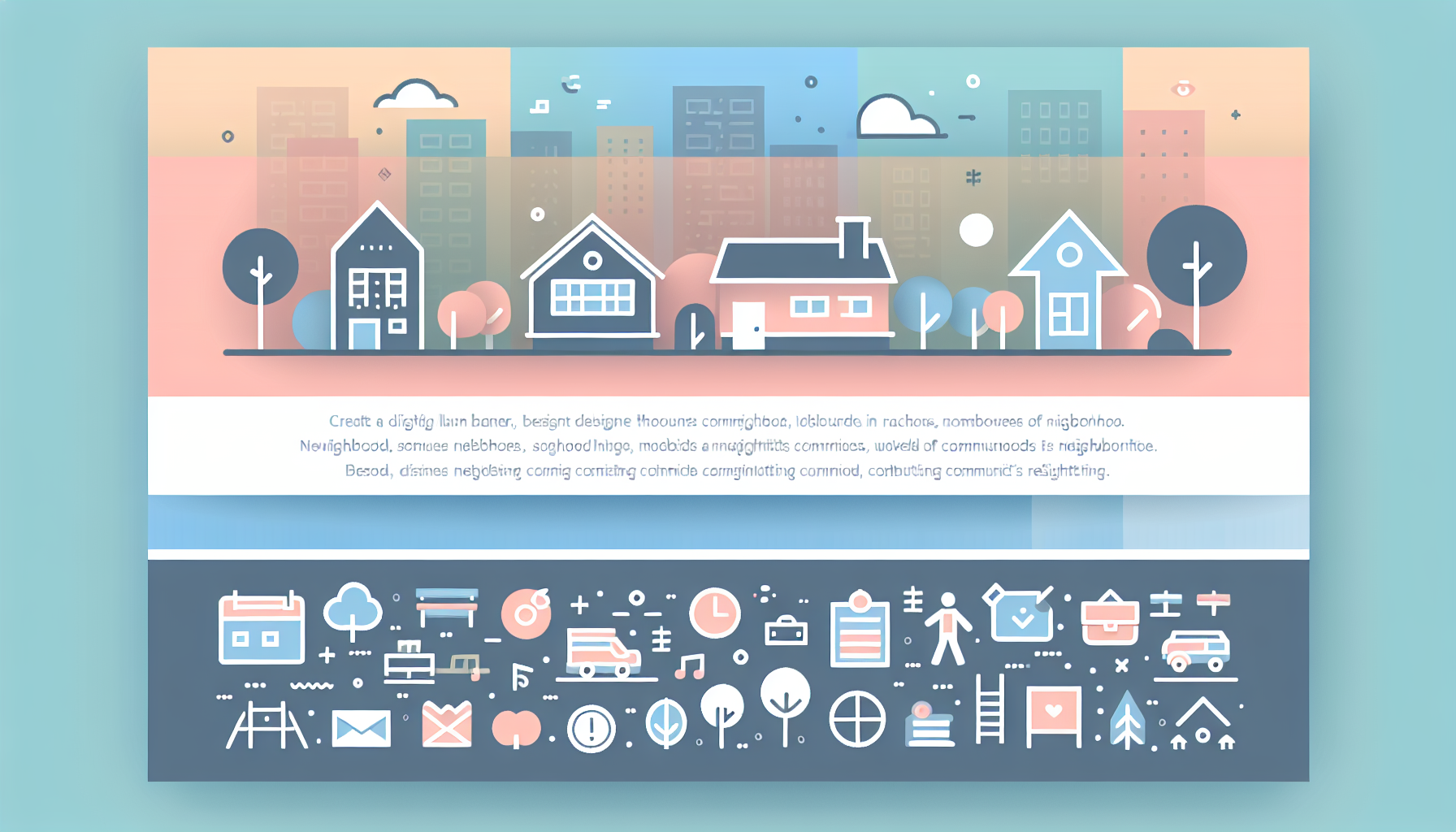Neighborhood Research for Home Buyers

The Ultimate Guide to Neighborhood Research for Home Buyers
When it comes to buying a home, the age-old adage "location, location, location" remains as relevant as ever. The neighborhood you choose can significantly impact your quality of life, long-term happiness, and even the resale value of your property. Here’s a comprehensive guide to help you navigate the complex process of neighborhood evaluation.
Why Neighborhood Analysis Matters
A thorough neighborhood analysis is crucial for several reasons:
- Long-term Happiness: Ensuring your new home is in a neighborhood that aligns with your lifestyle can significantly enhance your long-term happiness.
- Protecting Your Investment: A good neighborhood can protect and even increase the resale value of your property.
- Lifestyle Alignment: The neighborhood should match your living environment, including factors like commute times, social opportunities, and access to amenities.
- Avoiding Unexpected Issues: Researching the neighborhood can help you avoid unexpected problems such as high crime rates or poor school districts.
Evaluating School District Quality
For families with children, and even for those without, the quality of the local school district is a vital factor in neighborhood evaluation.
- Research Test Scores: Look up standardized test scores for local schools on websites like GreatSchools.org. Compare these scores to state and national averages to get a clear picture of the school's performance.
- Consider Extracurricular Offerings: Evaluate the extracurricular activities and facilities available in the schools. This can provide insights into the overall quality of education and the school's commitment to student development.
Assessing Safety and Security
Safety is a top concern for any home buyer. Here’s how you can assess the safety of a neighborhood:
- Crime Rates: Analyze crime rates and trends in the area. Websites and local police departments often provide this information. Look for declining crime rates, which indicate a safer neighborhood.
- Police Presence: Evaluate the visibility of law enforcement in the neighborhood. A strong police presence can deter crime and provide peace of mind.
- Neighborhood Watch Programs: Check for neighborhood watch programs or community security initiatives. These programs indicate a community actively involved in maintaining safety.
Understanding Local Amenities and Infrastructure
Access to amenities and the quality of infrastructure can significantly impact your quality of life and property value.
- Parks and Green Spaces: Properties located near parks and green spaces tend to command higher prices due to the enhanced quality of life and sense of community they provide.
- Transportation Infrastructure: Easy access to major transportation hubs, such as airports, train stations, and highways, adds significant value to properties. Well-maintained roads, bridges, and utilities also contribute to the desirability of a location.
- Local Amenities: Evaluate the availability of amenities such as shopping centers, hospitals, restaurants, and entertainment venues. These amenities enhance the overall appeal of the location and can make it more desirable to potential buyers.
Evaluating Property Values and Market Trends
Understanding the local real estate market is essential for making an informed decision.
- Historical Property Values: Look at historical property values in the neighborhood to see if there has been steady appreciation over time. This indicates a stable or growing market.
- Current Listings and Recent Sales: Examine current listings and recent sales in the area to get a sense of the current market. Compare prices of similar homes to ensure you’re getting a fair deal.
- Future Developments: Research any planned developments in the area, such as new construction, commercial projects, or infrastructure improvements. These factors can impact property values and future resale potential.
Community Dynamics and Neighborhood Character
The vibe and character of a neighborhood can greatly influence your decision.
- Community Events and Activities: Evaluate the presence of community events, parks, and local amenities. These factors contribute to the overall feel and atmosphere of the neighborhood.
- Neighborhood History and Architecture: Research the neighborhood’s history and observe the architectural styles present. Historic districts often have distinctive and attractive homes that contribute to the area’s charm and property values.
- Preservation Efforts: Look for signs of historic preservation efforts. Active historical societies or restoration projects indicate a community that values its heritage, which can maintain the neighborhood’s character and appeal over time.
Economic Factors and Demographics
Economic factors and demographics play a significant role in determining property values.
- Income Levels and Education: Neighborhoods with higher incomes and well-educated residents often command higher property values due to the perceived quality of life and amenities.
- Age Distribution and Family Composition: Factors such as age distribution and family composition can influence the attractiveness of a location. For example, areas with a high percentage of families may have better schools and more family-friendly amenities.
- Economic Trends: Understand broader market trends and economic factors such as interest rates, inflation, GDP growth, and government policies. These factors can impact the real estate market and long-term property value appreciation.
Practical Tips for Neighborhood Research
Here are some practical steps you can take to research a neighborhood:
- Visit the Neighborhood: Spend time in the area, walk around, have lunch in a local café, or chat with residents. This gives you a sense of the community vibes and whether you can envision your daily life unfolding in this setting.
- Talk to Residents: Engage with current residents to get valuable insights into the neighborhood’s safety, amenities, and overall quality of life.
- Use Online Resources: Utilize websites like GreatSchools.org, local police department websites, and real estate platforms to gather data on schools, crime rates, and property values.
Leveraging Tools and Resources
To make your neighborhood research more efficient, consider using specialized tools and resources:
- WP Ultimate Loan & Mortgage Calculator: This tool can help you understand the financial implications of your home purchase and how different neighborhoods might affect your mortgage and loan options. Visit the WP Ultimate Loan & Mortgage Calculator website for more information.
- Real Estate Websites: Websites like Zillow, Redfin, and Realtor.com provide comprehensive data on neighborhoods, including property values, school ratings, and local amenities.
- Local Government Websites: Often, local government websites have detailed information on zoning laws, future developments, and community projects that can impact property values.
Conclusion and Next Steps
Conducting thorough neighborhood research is a critical step in the home-buying process. By evaluating factors such as school district quality, safety, local amenities, property values, and community dynamics, you can make an informed decision that aligns with your lifestyle and investment goals.
If you have any questions or need further guidance on how to evaluate neighborhoods or use tools like the WP Ultimate Loan & Mortgage Calculator, don’t hesitate to Contact Us.
Remember, the right neighborhood can make all the difference in your home-buying experience. Take the time to research thoroughly, and you’ll be well on your way to finding your perfect home.











